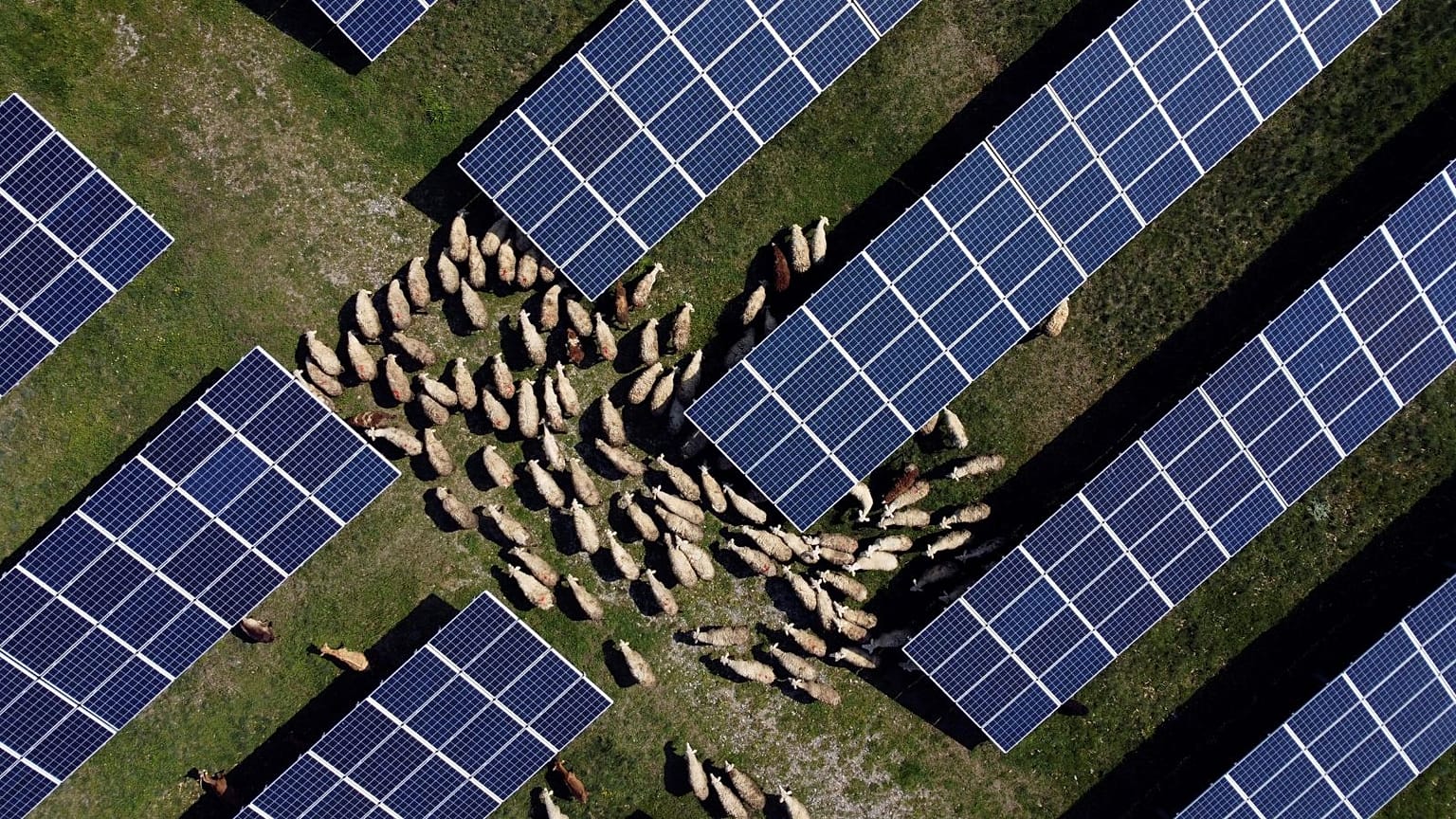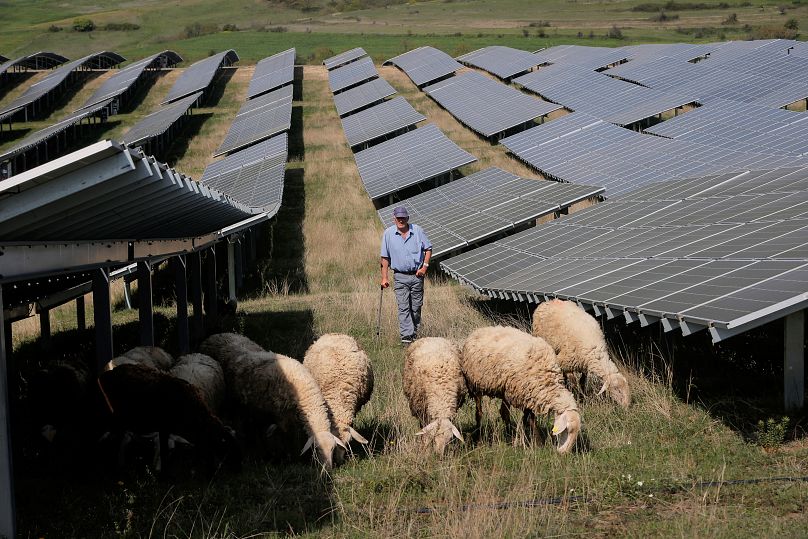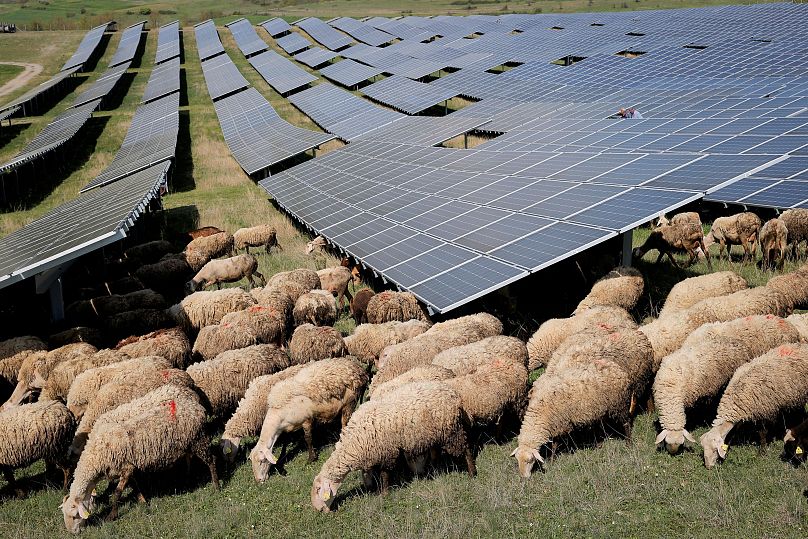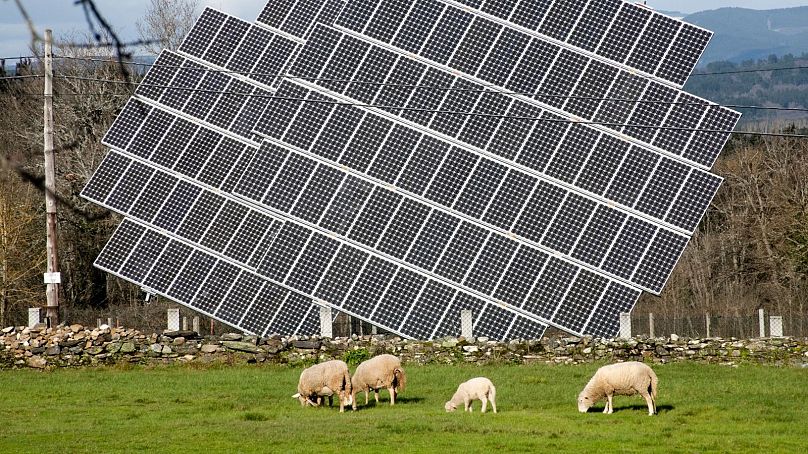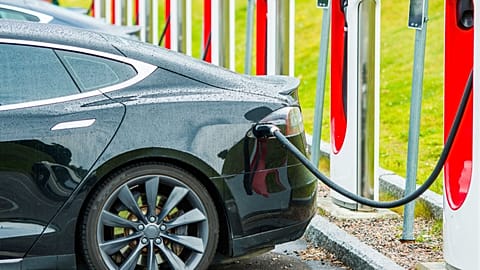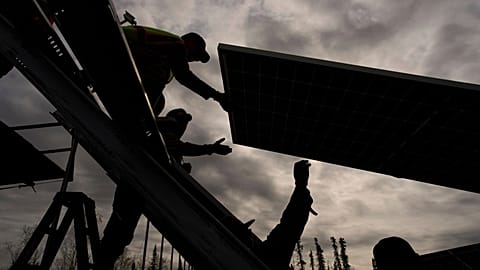A solar farm in Kosovo and Austria’s biggest PV plant have brought in some woolly helpers - here’s why.
A solar farm in Kosovo has brought in a new clean-energy machine to mow its grass: a flock of sheep.
Tired of wasting their own energy to keep the site trimmed, workers at the Rogane solar farm near the small town of Kamenica in eastern Kosovo have got some woolly helpers.
More than 100 sheep and a few goats graze twice a week in the fields where over 12,000 photovoltaic panels are installed.
"The workers realised that mowing the fields was very hard, they asked me whether I could bring my sheep," said 72-year-old shepherd Rexhep Rrudhani as he ordered his sheepdogs to manoeuvre the flock grazing under the panels.
"The sheep eat all kinds of grass here, good or bad grass, and they clean everything. We are all benefiting."
It’s one of many eye-catching accommodations across Europe, as renewable projects find ways to harmonise with the land- and cityscapes they’re slotting into.
How is Kosovo’s energy transition going?
Kosovo has between 12-14 billion tonnes of proven low-grade lignite coal reserves, the fifth largest in the world.
More than 90 per cent of its electricity is produced from coal and the rest is from renewables, mainly wind and solar.
The country aims to phase out coal by 2050.
"We are not spending any petrol running lawnmowers," said Arber Maliqi, manager of the solar plant. "Producing power from the sun and cutting grass with sheep means things here go green twice."
Where else is combining solar and sheep?
The Schafflerhofstrasse solar plant in Vienna, Austria is built on the site of an old gravel dump. Now it's the biggest PV plant of its kind in the country, capable of producing over 12 gigawatt hours of clean electricity for 4,900 Viennese homes.
That equates to CO2 savings of 4,200 tonnes per year. It is part of the plan to keep Vienna on track for carbon neutrality by 2040.
Sheep have been an iconic part of the scene since 2021, when a 90-strong flock was shepherded in to trim the grass around the panels.
150 Jura sheep now roam the land from April to October. In turn the arrays - which are higher off the ground than usual - provide the animals with shade from the sun and protection from the rain.
And they’re not just there for grass-munching purposes. The sheep are contributing to rewilding by providing natural fertiliser and carrying seeds and pollen in their wool.
To help regenerate the old dumpsite, the ground was prepared with a special seed mixture prior to introduction of the sheep, who winter in a nearby barn.
Created by Wein Energie, and part of a citizen solar power scheme, the project is one of several agrivoltaic systems in place in Austria.
What does agrivoltaic mean?
Agrivoltaic methods combine solar energy production with agriculture. It is a way of optimising land use without damaging ecosystems.
Agrivoltaic experiments are underway in Colorado, USA and have been successfully used in vineyards in France. In the case of crop growing, an algorithm is sometimes used to judge the water and sunlight needs of plants and adjust the angle of the solar panels accordingly.
Microclimates created by solar panels mean that plants growing beneath them may need less water, and the energy produced by the panels can be used by farmers for irrigation.
Although the concept is in its early stages it is thought that by using agrivoltaic methods crop farmers could increase profits by 40 per cent.
Who else is using ‘eco-friendly lawn mowers’?
Sheep are now used to cut grass in France after a successful trial in a Paris park in 2013, with an urban flock of sheep resident in the city since 2012.
“By grazing, they cut hedges, regulate lawns. Unlike goats, which eat everything, sheep eat only the greenest parts of hedges and meadows,” says Guillaume Leterrier, co-founder of Paris cultural media Enlarge Your Paris.
“They are indeed gardeners but also landscapers since they intervene in public spaces.”
Likewise, Google raised eyebrows in 2009 when they rented goats to mow the grass of their Californian headquarters from a company now called Living Systems Land Management.
Eco lawn management is a growing sector with several hundred rental companies operating in the US alone, according to Forbes.















